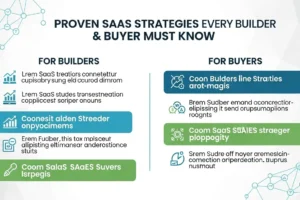Introduction
How2Invest? Investing is not just a catchphrase which the financially wise always toss it around at every opportunity. It’s also an essential step to ensure your own and your family’s future wealth. For young professionals and novice investors, the prospect of jumping into the stock market or other investment channels can look daunting and formidable at best–screw this up with mutual funds however! However, never fear, you are about to take the very first steps on road to financial freedom.
“How2Invest” in Today’s Market
Today, with the rapid and erratic growth of world currency markets brought on by high technology and regional sub-dividing, “How2Invest” has come to mean much more than just buying stocks or bonds. This approach carries with it an understanding of market trends that one must catch up on rather than waiting safely ensconced at home after plugging away at a few years worth of markets in boring old Tokyo.
For the modern investor, it includes a wide array of activities ranging from the traditional stock market to explore opportunities in the burgeoning bond markets, emerging markets and digital assets like Bitcoin. It also highlights the necessity for a diversified portfolio to achieve financial success and emphasizes life-long learning in an ever-changing financial world. In the final analysis, “How2Invest” today means giving oneself both the know-how and tools with which they can make well informed decisions that accord both with their own financial targets as well as their risk tolerance.
Understanding the Basics of how2invest
Before we delve into strategies and tips, let’s get clear on the basics. Investing means putting money to work in exchange for a return. In the enterprise class,one can invest money and anticipate a profit; in assets, one invests money with hope of achieving higher resale price.
The goal of investing is to put your money at work in one or more types of investment vehicles with the aim of having it grow over time.
Why Should You Invest?
Outrun Inflation:
This article teaches you the basics of becoming a real estate investor.resent day wealth.
Inflation depreciates money:
Investing makes sure that your savings not only stay in the game but also win.Year-by-Year Wealth Building
Investment returns
make your money grow in ways that you cannot achieve with a salary alone. A “down” year actually boosts your total assets if the next seven are upward Note for Retirement Planning
Investment brings you an enjoyable retirement.
The earlier you start investing, the more chance you have for compound interest to work in your favor.
How to Get Started in Investment
Set Your Financial Goals
Before you invest even a single cent, you must know why you are investing. Are you seeking to fund your retirement, buy a house, or pay for your child’s college education? Defining clear, achievable targets is the first rule of good investing.
Know Your Risk Tolerance
Every investment bears its own unique level of risk. Your risk tolerance means your ability to bear the market’s ups and downs. Young investors tend to have a higher risk tolerance because they have more time to recover from a drop in the market. Even so, all investments should fall within your comfort range and cater to your financial needs.
Learn
Knowledge is your greatest asset. A good starting place is to familiarize yourself with the basics of various forms of investment — stocks, bonds, mutual funds, real estate, etc. Resources such as books, podcasts, blogs, and even online courses can be extremely helpful.
Choose the Correct Investment Account
Depending on your investment goals, different accounts will be better suited to your needs:
- Retirement Accounts (IRAs, Roth IRAs, 401[k]s): Great for tax-advantaged retirement savings.
- Brokerage Accounts: Flexible investment accounts with no tax advantages.
- Education Savings Accounts (529 Plans): Designed for saving education expenses.
Start Small
You don’t need a ton of money to start investing. Many online brokerages now offer fractional shares or minimum deposit accounts. That means you can invest as little as you are comfortable with . Starting small also means you can begin learning by doing without risking a significant amount of money.
Diversify Your Portfolio
Don’t put all your eggs in one basket. Diversification means dividing your investments into assets that don’t move together. This way, if one investment performs badly, the success of others can help offset the impact.
Review and Adjust Your Portfolio Regularly
The financial market is always changing so are your financial goals. Regularly reviewing your portfolio ensures that investments align with their current financial goals as well as risk tolerance
Be Patient
Investing takes time. The most successful investors are those who make long-term commitment in spite of temporary upsets and stay committed to their ultimate financial goals even if the stock market crashes.
Public Requirements for How2Invest Guide
The investment landscape is a place for peovle who are familiar with the markets globally and value basic knowledge of financial instruments. It needs a guide to show you around in both directions if you’re new in Parkson invested years gone by.
For a How2Invest guide to truly meet its purpose, it must satisfy certain requirements for the public :
Lucidity and Simplicity of Language:
Information must be simple, direct and free from jargon. It must cater to both beginners and long-time investors so that all concepts are easily grasped.
Timely Information:
In the fast-moving realm of finance, obsolete information can result in lost opportunities – or worse, financial harm. Guides should stay as-current-as-possible with the latest market trends, rules and possibilities so they don’t lead readers astray.
Practical and Applicable Strategies:
In addition to theory,investment guides should provide readers with practical directions for what they learned. This includes step-by-step investment processes in several markets, risk control methods, and suggestions with respect to product portfolios.
Real-Life Examples:
Including case studies or real-world examples deepens understanding and shows how investment principles operate in practical situations.
Comprehensive View:
While it is important to cover the basics for newcomers, guides should also touch on more advanced areas like taxation effects, estate planning and international investing to attract a wider reader base.
Accessible:
Information should be made available to all, regardless of economic background. This includes providing the guide in multiple media formats (e.g., text, video) and making it affordable or free to access.
Ethical and Legal Considerations:
Guides should encourage ethical investment practices and bring legal considerations to the attention of readers as they make informed and responsible decisions.
By following these public requirements, How2Invest guides can give individuals a chance to control their economic futures and make decisions that reflect their goals and risk tolerance.
Best Practice for How2Invest
The world of investing offers so many different investment vehicles and strategies that at first glance one may feel overwhelmed. However, based on a few principles of behavior, these best practices not only help simplify the process but also improve your chances for success. Here are a few Best Practices for anyone hoping to start investing and as yet innocent of the field:
Start Early, Invest Regularly:
Time is money, so the earlier you start investing the more your money can compound. Monthly contributions to your investment kitty can smooth out any downward swings in the market.
Keep Informed:
The market is dynamic and the tides of taste keeps shifting. If you take time to be informed by reputable financial newspapers or magazines, by continuous educated guess work You may make an insightful investment decision when opportunities come your way that would otherwise have been passed over.
Technology has Its Advantages Too:
There are numerous apps and platforms for investing simply, information resources, and portfolio management tools available. These technologies all help make investing easier and save time.
Know Your Investments:
Though diversifying your portfolio is key, understanding the nature and risks of your investments is equally essential. Do not invest in complex instruments or faddish assets without a clear grasp of how they work and what they might do to your portfolio.
Seek Professional Advice as Necessary:
Though many of today’s investors prefer to go it alone, a financial advisor can help you think through complex decisions and set up comprehensive financial plans. In the end, tailored advice based on your personal needs will provide insight.
Planned for the Long Term:
Although short-term market gains are always tempting, from a long-term perspective it’s usually said investing brings best return on account of greatest losses avoided. The investor has to stay in the market steadily too. If he sells out of panic, then his losses may become permanent.
Ethical Investing:
The Practices of Ethical investing not only concentrate on the financial return but also towards social and environmental responsibility. This kind of thinking could give not only financial rewards, but also self-satisfaction and a happier life for everyone. Nevertheless, the real concern is not for ethics or morality but simply what makes sense in an ethical investment world.
Stick to these best practices and you’ll be able to approach the market with confidence, ready to make decisions that line up with your financial objectives and personal values. Wise investment does not just entail amassing wealth; it also means making informed choices which will help create a financial house that is stable and practising ethical standards.
Benefits of Compliance with Public Requirements and Best Practices for How2Invest
Adhering to public requirements and best practices in investing is more than a formality; it is a strategy with many benefits for all investors. First, by making the choice for clarity and simplicity, investors are not exposed to complex financial terms that make the world of investment so distant and fearful. This basic understanding is a must for building self-confidence and making informed decisions.
Keeping up-to-date information and practicable strategies on hand helps investors to travel through the ever-changing financial current with ease. It makes them better able to see new opportunities in time and to take steps which could otherwise compromise their ultimate investment objective.
Incorporating real life examples and ensuring that coverage of investment topics is exhaustive not only makes the learning experience much richer, but also gives investors an overall observation on the financial world. This way of thinking helps them to employ flexible strategies which might work in different situations, thereby increasing the flexibility of their investment portfolios against market whimsy.
By making investments open to everyone, it turns investment into a habit. This expands the financial realm for and from all countries and social milieux. This multilaterality strengthens the entire financial system; it builds a buffer against erratic changes in markets.
Compliance with ethical and legal considerations is the foundation of sustainable investment, encouraging investors to seek profit from practices that are not only beneficial but bring positive effects to society and the environment. This ethical attitude carries an investor’s financial objectives to the point where they are consistent with the values they hold, instilling in him a more meaningful approach to investing.
Finally, when public requirements and best practices are fully integrated into the How2Invest guides, investors are able to achieve not only financial success but also a more fair, open and sustainable financial world.
Future Directions of How2Invest Guides
In our next stage forward, The How2Invest guides aim to continue to adapt and develop in order to meet the needs of an ever-changing financial landscape. An important goal lies in upgrading the use of artificial intelligence in investment strategies. By incorporating AI tools, for example, investors will be able to benefit from predictive analytics, risk analysis and personalized investment recommendations; this will further simplify the decision-making process.
Another change is that sustainability and responsible investment will remain central to The Future of How2Invest. As global awareness of environmental, social-especially for poor countries-and governance (ESG) issues grows, such investing will not only outlet a financial return but also do good for the world.
And next, they expect to see more informative resources on new financial instruments like cryptocurrencies and blockchain technology. These areas represent both opportunity and danger, so the investor needs a thorough education in order to make an informed decision.
In addition, community engagement will thrive through forums, webinars, and interactive platforms. By establishing a group of knowledgeable investors together, they can learn from one another and receive support. The investment journey then becomes not just full but also connected.
The How2Invest guides aim to incorporate these future directions: to empower investors with the knowledge, means, and confidence needed for a successful financial future that is also ethically mindful.
In Summary
Investing can appear difficult at first, however knowledge and education changes one’s entire perspective, and new doors are thrown open. If you live by what we’ve said on this, then there is no reason why your financial future shouldn’t be bright or secure! Following this framework of steps might help you embark on a road that leads all the way to financial freedom Remember too why now is already too late-get started today!
No matter whether you are still in your early 20s or already well settled into the financial world, it’s never too late to invest. More knowledge makes you more capable of reaching your goals in life financially. Don ’ t wait any longer: after reading this article and setting your financial goal, take the first steps towards a new future.
FAQs
Q1: How much of your money is needed to begin investing?
A1: This question is case-specific. Several online brokers and investment apps now let consumers begin their directions small, often with as little as $5 to $10. Begin where you are comfortable and then grow over time. But accumulate some money first!
Q2: Can I invest if I don’t know anything about the stock market?
A2: Of course, you can. There’s no one who starts off as an erudite. The How2Invest guideline systems have been tailored to help entry-level investors understand the basic principles of the stock market. Give yourself space to progressively expand your knowledge on an ongoing basis.
Q3: How do I know which investments are right for me?
A3: The right investments depend on your financial goals, risk tolerance and investment horizon. Diversification is advisable, and information and research are the keys. It can also be a good idea to look for a money management advisor.
Q4: What are the risks involved in investing?
A4: All investments involve risk, including potential loss of principal (i.e., the sum you have invested). The amount of risk varies with the type of investment. Generally, higher returns are linked to greater risk. Before making any decisions, it is important to understand the risk associated with each investment.
Q5: How can I monitor the performance of my investments?
A5: You can monitor your investments through your broker or investment platform. Many platforms provide detailed reports on your portfolio’s performance and big dataanalysis. Moreover, by reading up on market developments and understanding the forces that drive economies, you can make smarter investment choices.
Q6: Is it possible to lose all my money when investing?
A6: While it is possible to suffer heavy losses when investing, especially in higher-risk investments like shares; with diversification and solid investment strategies, your odds of losing everythingare greatly reduced.
Q7: How long should I keep my money in cash?
A7: This depends to a large extent on your objectives as an investor and how you’re attaining them. Some investments are suited for the short term, like a bond that will be redeemed in two years. Others, like stocks, usually take longer periods of time to bear any fruit. The general rule is a long-term point of view in investment, particularly when it comes to the stock market.
By tackling these problems, the How2Invest project sets out to take some of the magic out of investment for those who have yet to give it a try. Remember that the most important thing is to begin, no matter how small your first move might be to put a foot on the ladder.









